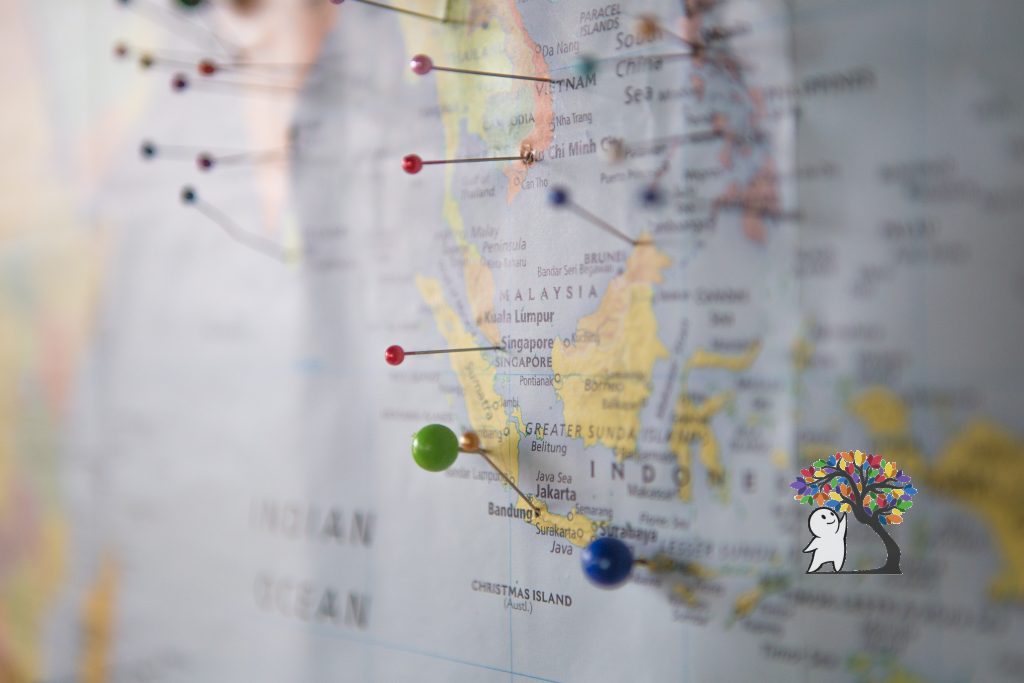7 Stages of a Long-Distance Relationship

Long-distance relationships are extremely common. An estimated 75% of college students will be in a long-distance relationship at some point during university, for example (Stafford, 2005). Social media, messaging apps, and video calls make it easy for couples to stay connected while apart for extended periods of time. But long-distance relationships are anything but easy. Studies have shown higher breakup rates in long-distance relationships than close-distance ones (Cameron & Ross, 2007).
While some long-distance relationships start out that way when couples meet online, this article focuses on the transition from close-distance to long-distance relationships. That being said, the last three stages apply to any type of long-distance relationship. Here are 7 stages in a long-distance relationship:

1: Decision
The first stage of a long-distance relationship is the decision to try to make long-distance work. When one partner lives far away or is faced with an opportunity or obligation that requires travel, and the other partner cannot or chooses not to go with them, the couple has to choose between breaking up or entering into a long-distance relationship. Common factors that cause couples to consider a long-distance relationship are: travel due to job description or promotions, a partner in the military, education, an emergency, or family members moving (Sam Houston State University, 2018). During the decision stage, partners evaluate whether they want to commit to a long-distance relationship, and some decide it’s best to simply end the relationship.

2: Parting
Once both partners have agreed to pursue a long-distance relationship, they will try to spend every minute together before they are separated to make up for the weeks, months, or years they will spend apart. Parting is also the stage where partners should set boundaries and make rules for when their relationship transitions to long distance (PennState, 2020). Establishing rules is important to the health of the relationship because partners must self-monitor their behavior when they are apart.

3: Transition
The transition stage comes after one or both partners have left, launching the long-distance part of the relationship. In this stage, partners might be in a state of denial or simply too busy with the practicals of moving and adjusting to life without their partner to dwell on how their relationship has changed. They will probably message or call their partner frequently and keep them updated on every little thing (Berg, 2015). They might still feel like they are still in a close-distance relationship.

4: Realization
During the realization stage, couples begin to process what life is like without their partner. They must face the reality that they can’t depend on their partner to be there for them physically anymore. The realization stage, while painful, also teaches partners to be more independent, have better time management, and improve their communication (Mietzner & Li-Wen Lin, 2005). Some people even see increased physical and mental health, such as decreased anxiety and depression, when they transition to a long-distance relationship, although this often comes at the cost of increased stress levels (Du Bois, 2016).

5: Jealousy
Jealousy is a common stage in long-distance relationships. In a study of 125 U.S. college students who had been or were currently in a long-distance relationship, jealousy was the most commonly experienced negative emotion while they were apart (Suwinyattichaiporn, 2017). Participants in the study reported feeling jealous not only of potential romantic interests but also of friends and family who got to spend more time with their significant other than they did. Higher amounts of jealousy were reported in the study when participants were on social media, especially if their partner was posting a lot with other people.

6: Doubt
Relational uncertainty is another typical stage in long-distance relationships. It’s normal for long-distance partners to idealize their partner or their relationship to some extent, and this can even help them maintain their relationship (Crystal Jiang & Hancock, 2013). If this idealization becomes too intense, however, partners are often left doubting their relationship (Suwinyattichaiporn, 2017). Partners with long-distance relationship experience reported that the longer they went without seeing their partner face-to-face, the greater their relationship uncertainty became (Suwinyattichaiporn, 2017). And if one or both partners have doubts about the relationship before the transition to long distance, the relationship has a weaker chance of surviving (Cionea, 2019).

7: Validation
Validation is the last stage on this list, but because long-distance relationships require a lot of maintenance, partners in a successful long-distance relationship will find themselves returning to it again and again. In a study published in the Journal of Communication, couples wrote separate journal entries after every communication with their close-distance or long-distance partner (Crystal Jiang & Hancock, 2013). Both groups were more satisfied with their relationships when their partner actively listened to them and responded in positive ways (encouraging words) versus neutral (acknowledgement) or negative ones (discouragement). This is important because although long-distance partners did not have the option to disclose to their partner face-to-face, they still felt like their relationship improved after phone or online communication as long as they could tell that their partner supported them. This study points to the importance of disclosure and open and honest communication in long-distance relationships to build trust and validation.
Long-distance relationships are difficult, but they can also be very rewarding. Once partners decide to commit to a long-distance relationship, they will inevitably go through new experiences without their partner, but this can make them stronger. Long-distance relationships may come with jealousy and doubts, but they also offer an opportunity for partners to step back and reevaluate their relationship, and if they find themselves choosing each other again and again, then their relationship has a strong chance of working out.
References:
- Berg, U. (2015). Remote sensing: Structures of feeling in long-distance communication. In Mobile Selves: Race, Migration, and Belonging in Peru and the U.S. (pp. 105-140). NYU Press. Retrieved 6 May, 2020, from www.jstor.org/stable/j.ctt15zc7b7.8.
- Cameron, J. J., & Ross, M. (2007). In times of uncertainty: Predicting the survival of long-distance relationships. Journal of Social Psychology, 147(6), 581–606.
- Cionea, I. A., Wilson Mumpower, S. V. & Bassick, M. A. (2019). Serial argument goals, tactics, and outcomes in long-distance and geographically close romantic relationships, Southern Communication Journal, 84:1, 1-16, DOI: 10.1080/1041794X.2018.1531915.
- Crystal Jiang, L., & Hancock, J. T. (2013). Absence makes the communication grow fonder: geographic separation, interpersonal media, and intimacy in dating relationships. Journal of Communication, 63(3), 556–577.
- Du Bois, S. N., Sher, T. G., Grotkowski, K., Aizenman, T., Slesinger, N., & Cohen, M (January 2016). Going the distance. Family Journal. 24(1), 5-14.
- Mietzner, S., & Li-Wen Lin. (2005). Would you do it again? College Student Journal, 39(1), 192.
- PennState Behrend (2020, March 18). Long distance relationships. Retrieved 6 May 2020 from https://behrend.psu.edu/student-life/student-services/personal-counseling/student-resources/long-distance-relationships.
- Sam Houston State University. Rules for making your long distance (January 2, 2018). University Wire, originally published in Houstonian. Retrieved 6 May 2020 from Proquest database.
- Stafford, L. & Merolla, A. J. (2007). Idealization, reunions, and stability in long-distance dating relationships. Journal of Social and Personal Relationships. https://doi.org/10.1177%2F0265407507072578.
- Suwinyattichaiporn, T., Fontana, J., Shaknitz, L., & Linder, K. (2017). Maintaining long distance romantic relationships: The college students perspective. Kentucky Journal of Communication, 36(1), 67–89.



Responses